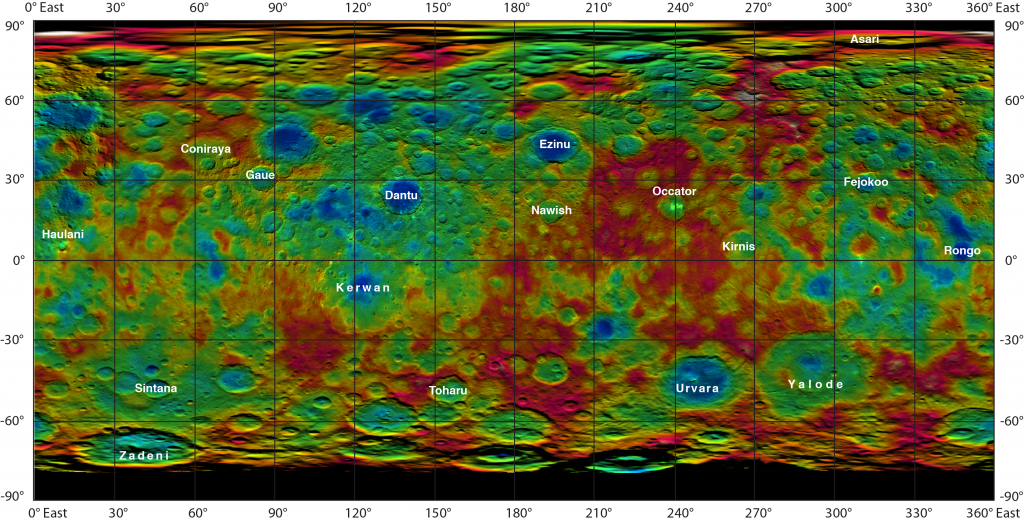-
Tips for becoming a good boxer - November 6, 2020
-
7 expert tips for making your hens night a memorable one - November 6, 2020
-
5 reasons to host your Christmas party on a cruise boat - November 6, 2020
-
What to do when you’re charged with a crime - November 6, 2020
-
Should you get one or multiple dogs? Here’s all you need to know - November 3, 2020
-
A Guide: How to Build Your Very Own Magic Mirror - February 14, 2019
-
Our Top Inspirational Baseball Stars - November 24, 2018
-
Five Tech Tools That Will Help You Turn Your Blog into a Business - November 24, 2018
-
How to Indulge on Vacation without Expanding Your Waist - November 9, 2018
-
5 Strategies for Businesses to Appeal to Today’s Increasingly Mobile-Crazed Customers - November 9, 2018
NASA’s Dawn Spacecraft Reveals Stunning Map Of Dwarf Planet Ceres
Positioned a mere 900 miles over the dwarf planet’s surface, Dawn will continue to take images and collect spectral data, hopefully unravelling the origin of those winking bright spots, and teaching us more about this odd little world’s past.
Advertisement
As per astronomers, Ceres is the biggest object in the asteroid belt, having a diameter of 584 miles, which is about 40% the size of Pluto. Of the mountain peaks included in this map, a few are as high as 9 miles (15 kilometers). Certainly the landscape isn’t as geologically interesting as Pluto, but Ceres is similar to other bodies spotted in the Solar System. “The features are pretty consistent with an ice-rich crust”, Paul Schenk, a Dawn science team member and geologist at the Lunar and Planetary Institute in Houston, said in a press release.
The mapping project has also given the global Astronomical Union the opportunity to name features on the surface. Occator is the name of the Roman agriculture deity of harrowing, a method of leveling soil.
They include Fejokoo, a Nigerian god who supplied the yams, Coniraya (who apparently inspired the Incas to create terraced farming and irrigation), and Kirnis, the Lithuanian deity who guards cherry trees. Then there’s Occator, the home of Ceres’ mysterious bright spots, which seem to fill the Occator crater with a gaseous haze. It boasts a 2-mile-high (3 km) pointy peak rising out of the center, and is named for the Indian and Iranian god of plants and fields.
Haulani, named after the Hawaiian plant goddess, has a diameter of about 20 miles (30 km). A crater called Ezinu, after the Sumerian goddess of grain, is about the same size.
“The impact craters Dantu and Ezinu are extremely deep, while the much larger impact basins Kerwan and Yalode exhibit much shallower depth, indicating increasing ice mobility with crater size and age”, Ralf Jaumann, a Dawn science team member at the German Aerospace Center in Berlin, said in the statement. The newly released maps also show the names of the features that have been approved by the IAU. They were produced on June 6, 2015.
Advertisement
NASA’s Dawn spacecraft is the first to successfully enter orbit around two different mission targets and the first to orbit a dwarf planet. From 2011 to 2012, the probe has conducted observations of Vesta.




























